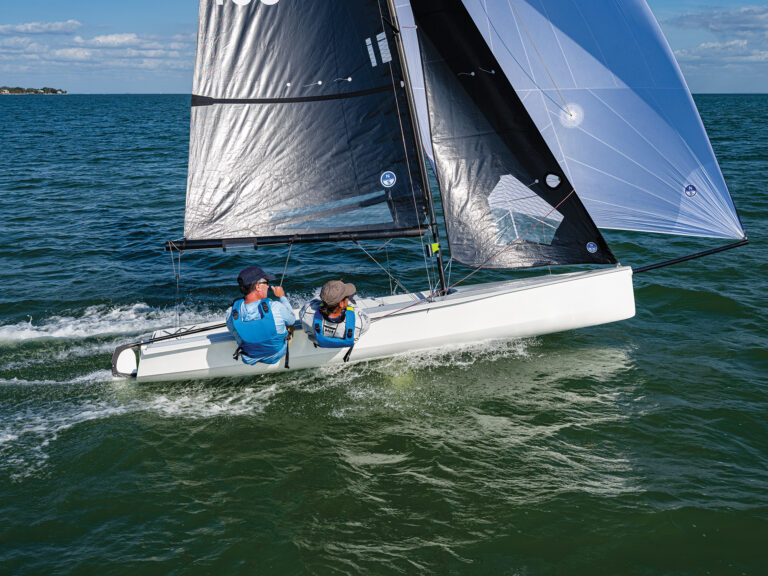At the risk of taking a beating from a cadre of dinghy sailors wielding 4-foot hiking sticks, the time has come to reveal the truth about one-design racing. Its totally over-rated. Its difficult, its time-consuming, and the steadily increasing emphasis on pure one-design competition has stunted the growth of the sport.
Sure, its an extremely refined contest conducted on a playing field that in theory is absolutely level–which has its merits–but competing in a strong class is a hell of a lot of work. You have to be up on the class rules, prepare your boat meticulously, and recruit a skilled crew. And if you cant get a good start, all the preparation goes right over the transom. Thats why most fleets never reach their full potential.
What if racing were easy? What if you could push your dinghy off the beach and go racing with no more advance thought and planning than to remember, “Oh yeah, its Thursday.” What if you just had to raise the sail on your little keelboat and cast off in time to meet the rest of the gang out by the harbor entrance at 6 p.m.?
Multihull and monohull sailors in Britain and other countries have been doing this for years in all sorts of unusual and sometimes extremely fast little boats. It also happens in several enlightened pockets in the United States, typically using a handicap rule called the Portsmouth Yardstick. Its not a sophisticated VPP-based rule; its an annually updated time-on-time handicap rule based on years of race results (http://www.ussailing.org/Portsmouth).
But the results are less important than being able to show up in any kind of boat on any given day–with one crew, four crew, or no crew at all. What counts is that you have some company out there; that you have a chance to try and put some other boats behind you, and that you can focus most of your energy on simply having a good time.
Want proof that this is a good formula? Take a look at how our bigger boats do most of their racing — on weeknights using PHRF, an unsophisticated handicap rule based largely on past results. And in most of those fleets, the competitors dont take the results too seriously either– although Ive heard there are exceptions to the rule.
The goal is to go have an adventure–maybe a misadventure–with a friend, a child, a parent, a spouse. A starting time and a starting line gets you out of your office and into the boat before it gets dark. Once youre out there, somethings bound to happen, either on your boat or somebody elses nearby. Youll come back refreshed–probably more so than if youd spent the evening fairing your bottom to within .01″ of the class-legal tolerances.
In the interests of full disclosure, Ill admit that Im not going to abandon the one-design racing I love, and Ill enthusiastically cross many a one-design starting line this year. But Ive been thinking there could be other nights when I head out for a fun race with people less obsessed than I am with the fine-tuning of trim and tactics–my kids, for example.
Keep in mind that having a little latitude to interpret the results can be a good thing also: if you lose the race, your ratings obviously wrong, you had a first-time crew, and you were only out to have a good time. If you win, youve proven beyond the shadow of a doubt that youre an extremely talented sailor.









